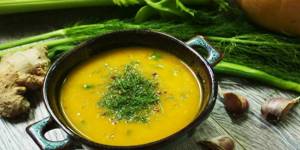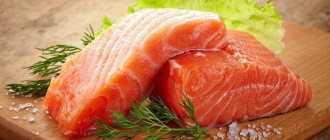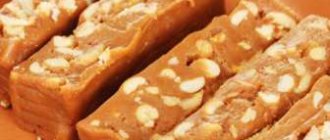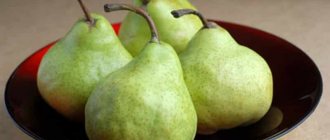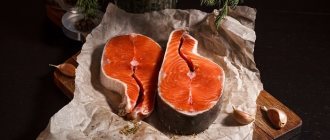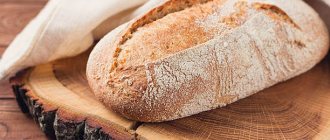How to make pea puree
The process of preparing porridge or puree is simple. First of all, you need to choose the right beans. Experienced housewives recommend using yellow waxy peas, which are grown on loamy soils. This product contains a large amount of minerals and amino acids. The technology for preparing pea puree is as follows:
- The beans are soaked in cold water for 5-8 hours. It is not recommended to stir them or change the water.
- Before cooking, drain the water and place the peas in a saucepan. For every glass of beans you will need 3 glasses of clean cold water.
- Place the pan over high heat and bring to a boil, after which the heat is reduced to a minimum. Cook the puree for three hours.
- Salt is added 10 minutes before the end of cooking.
In order to achieve a uniform consistency, the finished puree is ground in a blender or pounded with a wooden mortar. If dry peas consist of halves, they will cook much faster.
Mashed potatoes
Mashed potatoes are made from potatoes cut into small cubes and boiled in water. It is kneaded to a puree-like consistency, adding potato broth or milk, salt, as well as butter, cream or an egg. If you use all these ingredients to prepare the puree, it will turn out quite fatty and the calorie content of the puree will increase significantly.
Mashed potatoes are an excellent side dish and an independent dish for children and adults. It goes well with any vegetables, fish and poultry, but it is better not to eat it with meat, since such food will put a lot of stress on your stomach, and you will easily gain extra pounds.
Tips and tricks
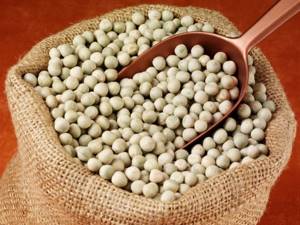
To make the puree tastier, you should follow some recommendations for its preparation:
- Experienced chefs advise adding water in excess of the prescribed amount when cooking whole peas. This makes the beans more crumbly.
- For garnish, it is best to use durum varieties. They are distinguished by a dark green tint and the presence of wrinkles.
- If the peas are not soaked, they cook much longer than expected. Sometimes cooking takes 8-9 hours.
- Cook the puree with the lid tightly closed and only over low heat.
- If this dish is prepared as a side dish, then it should be made thicker. To do this, the amount of water is reduced by 20%.
A side dish of legumes goes well with fatty meats, sausages or vegetable gravy. It is not recommended to combine pea puree with fish and seafood.
Benefits during pregnancy
Many pregnant women refuse dishes with peas, citing the fact that they bloat their bellies. But this property of peas can be easily removed.
But the benefits of porridge for the body of the fetus and mother are much greater. To do this, simply soak the legumes before cooking or add dried dill, cumin or parsley, or carrot salad to the dish.
The benefits for expectant mothers are:
- contains ascorbic acid, which will increase immunity;
- iron will prevent the development of anemia;
- manganese is responsible for the formation of the skeletal system of the fetus and mother, improves the mental state of a woman;
- minerals improve lipid metabolism.
Pea is also useful in that it regulates and controls insulin synthesis, improves and enhances blood flow in the body of the fetus and its mother.
The benefit of eating pea porridge is that it quickly replenishes the body with all the necessary vitamins and microelements.
Contents and benefits of microelements and vitamins per 100 grams of dry peas
| Name | Content | Daily requirement % |
| Co (cobalt) | 13.1 mcg | 1.5 |
| PP (niacin) | 2.2 mg | 8.8 |
| K (potassium) | 731 mg | 36.55 |
| Ca (calcium) | 89 mg | 8.9 |
| Mg (magnesium) | 88 mg | 35 |
| B1 (thiamine) | 0.81 mg | 54 |
| B9 (folic acid) | 16 mg | 1.6 |
| B6 (pyridoxine) | 0.27 mg | 13.5 |
| Fe (iron) | 6.8 mg | 45 |
| Cu (copper) | 0.75 mg | 50 |
| B2 (riboflavin) | 0.15 mg | 13.5 |
| Zn (zinc) | 1 mg | 10 |
In addition, vegetable protein is much easier to digest by the body. The benefits of plant fiber are that it cleanses the body, removes toxins from the intestines, and promotes the healing of problematic and oily skin. The benefits of consuming boiled pea puree for diseases of the cardiovascular system, chronic fatigue, various infectious diseases, and high blood pressure are known.
Is there any harm from peas? Yes, unfortunately, such porridge causes harm to some people due to individual intolerance. The harm of eating boiled peas in children under 3 years of age is bloating and colic. Peas are known to be harmful in some chronic diseases: acute renal failure, joint inflammation, cholecystitis, circulatory disorders, gastrointestinal and duodenal diseases. Harm for older people due to increased gas formation is also noted.
Not everyone benefits from pea porridge for breakfast. In rare cases, the product can be harmful.
- This legume can have a negative effect on older people suffering from an increase in the amount of uric acid in the blood.
- Harm can be caused to patients with pathologies of the kidneys and gallbladder at the time of exacerbation.
- Contraindicated for children under one year of age.
- It is not recommended for use by people with circulatory disorders of unknown etiology.
- Patients with pathologies of the duodenum, as well as those suffering from flatulence, should also refrain from consuming this legume to avoid harm.
- For gastritis with low acidity, it is better to exclude legumes from the diet, as they stimulate a decrease in stomach acidity.
It is best to try pea food in small quantities first, and if no reaction occurs, you can safely introduce it into your diet.
- Boiled peas cause bloating and flatulence, so you should eat them in small portions, combining them with vegetables and herbs (dill, green onions, fennel).
- It is contraindicated for people with gastrointestinal diseases (especially during acute periods), cholecystitis, gout, nephritis, and stomach ulcers.
- Children under 3 years of age and older people should not eat porridge due to the risk of colic and pain. However, already in kindergartens, pea porridge is a frequent guest on the table.
- Peas are not recommended during periods of exacerbation of heart disease and poor blood circulation. This is due to the increased load on the diaphragm and heart muscle when digesting the side dish.
Pea porridge is healthy and affordable for everyone. And to make the food tasty, you need to remember simple cooking rules:
- If the porridge is prepared from dried rather than fresh peas, the cereal is soaked overnight (6-8 hours). This way you can get rid of the specific and not everyone pleasant smell of cereal. Soaked peas have a pleasant nutty aroma.
- After soaking, the water is drained and cold fresh water is added. Cook the cereal over low heat and with constant monitoring. Capricious peas often try to burn or escape from the pan.
- You need to salt the porridge at the end of cooking, not at the beginning.
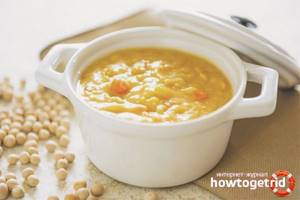
Eat pea porridge several times a month and it will keep your health in order. It will also preserve your youth and beauty, and you will always be in a great mood.
Calorie content and benefits
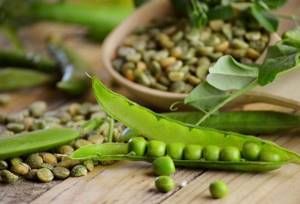
Dry peas contain a lot of useful substances. The calorie content of porridge from this leguminous crop is 130 kilocalories. This is 23 calories less than wheat and 30 more than barley. Thus, among the available and popular porridges, pea porridge is in the middle. In addition to wheat, rice porridge is also high in calories - 144 kilocalories - and pearl barley with 138 kilocalories.
As for the content of vitamins and microelements, pea porridge boasts quite a large amount of vitamin A, B1, B2, PP and E. Dry peas also contain the following microelements: potassium, calcium, phosphorus, magnesium and sodium. The amount of iron in pea porridge is twice that of buckwheat.
Due to the large amount of potassium, pea puree is recommended for athletes and people who want to build muscle mass. Nutritionists advise including pea puree without oil in your menu as often as possible. The calorie content of one serving is within the normal range for a person leading an active lifestyle.
Polyunsaturated amino acids and antioxidants make this product indispensable in the fight to preserve beauty and youth. It’s no wonder that women in India and Pakistan love to use dry pea flour in face masks.
Compound
Pea porridge is not only a satisfying, but also a very healthy dish. It contains substances necessary for the body such as:
- vitamins of groups A, PP, B, E and C;
- tryptophan;
- beta-carotene;
- potassium;
- iron;
- tin;
- zirconium;
- fluorine;
- boron;
- selenium, etc.
Peas remain healthy regardless of the cooking method: puree, soup, porridge, salad. In winter, you can take the sprouted seeds of this product, and in summer you can use green peas to prepare various dishes.
Harm and contraindications

Despite such obvious benefits, pea puree, like any other product, can cause harm to the body. People with diseases of the gastrointestinal tract should be careful, since with gastritis and stomach ulcers, this product causes an exacerbation of the disease. Eating too much boiled peas causes bloating and gas. Doctors do not recommend using this product if you have kidney or liver failure.
Obese people should also be careful. Still, the calorie content of pea puree per 100 grams of product is over 100 kcal, and a standard portion weighs 200-250 grams.
Number of calories
Pea porridge is a low-calorie dish, but after eating it, hunger is satisfied for a long time. For this reason, this product can be safely used in the process of weight normalization.
100 grams of cooked pea puree contains 90 kcal. The BJU in this case is as follows: proteins – 6.7 g, fats – 0.8 g and carbohydrates – 17.7 g.
The calorie content of pea porridge varies depending on how it is prepared:
| Cooking method | BJU | Calories |
| On the water | proteins - 6.2 g, fats - 0.6 g, carbohydrates - 16 g | 89,3 |
| With Chiken | proteins - 7 g, fats - 3 g, carbohydrates - 10.5 g | 93 |
| With fried onions | proteins - 4.7 g, fats - 3.7 g, carbohydrates - 8.6 g | 285 |
| With meat | proteins - 9.8 g, fats - 13 g, carbohydrates - 12.5 g | 200 |
| With added butter | proteins - 7 g, fats - 2 g, carbohydrates - 23 g | 140 |
| With stew | proteins - 7.55 g, fats - 4.46 g, carbohydrates - 15.29 g | 126 |
Boiled peas are a healthy low-calorie dish, but if you constantly eat large portions, you may experience gas and bloating.
Cooking recipes
Unfortunately, pea puree is not popular among the population of our country. Most housewives do not see the benefits of this dish or do not know how to deliciously prepare legume puree. And in vain, because in terms of the amount of protein, peas can be compared with veal and become an alternative to meat dishes for families with little income. This is an indispensable product for vegetarians and fans of a healthy lifestyle.
In addition to simple cooking in water, there are recipes that suggest adding cream, various spices, herbs and vegetable oils to pea porridge. You can complement the dish with onions fried until crispy.
Ingredients for 4 servings:
- Two and a half glasses of water.
- One full cup of dry peas.
- Half a glass of cream.
- Two tablespoons of butter and vegetable oil.
- Salt, allspice and herbs.
To prepare a thicker puree, you will need 2.5 cups of water. If desired, you can increase the water, but then the resulting dish will be watery. Housewives call such porridges “sluts.”
The peas are soaked for five hours. Place the beans in a thick-walled pan and fill them with clean water with the addition of vegetable oil. The most commonly used are olive, pumpkin, sunflower and corn. Each of them has a number of advantages and is good for health.
The finished peas are passed through a blender to obtain a homogeneous mass. Then add cream, salt and spices heated in the microwave. Mix everything thoroughly. When serving, sprinkle the finished dish with finely chopped parsley and dill.
Separately, fry onions, cut into thin half rings, until crispy. The calorie content of pea puree made with water is slightly lower than that prepared with cream and butter, but the taste of such a dish will not differ for the better.
What determines the calorie content of pea porridge?
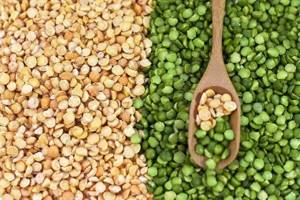
On store shelves you can find several types of pea cereals: whole polished, split polished. At the same time, yellow and green grains are distinguished by color.
The split type of cereal is easier to boil. For those losing weight, it is better to choose frozen peas; their calorie content after cooking is only 33 kcal/100 g.
The calorie content of a finished dish depends not so much on the product itself, but on the additives that are used in its preparation.
The nutritional value of pea porridge is increased due to the inclusion of the following ingredients:
- butter, vegetable oil;
- onions, carrots, celery, etc.;
- beef, pork, chicken;
- smoked meats;
- mushrooms
For those who strictly watch their figure, it is advisable not to put anything in the porridge except salt and herbs. For variety, you can sometimes add stewed vegetables with lean meat or mushrooms.
Peas with smoked meats

Pea puree with smoked meats is one of the favorite dishes of German cuisine. It is served with fried sausages or boiled sausages. During the cooking process, finely chopped smoked meat (pork ribs or brisket) is added to the puree. This dish acquires the smell and taste of smoked meats, making it more refined and aromatic. Before turning off the pan, season the dish and add butter to it.
Useful properties of puree
Mashed potatoes and peas are recommended for dietary nutrition and weight loss, not only because of the low calorie content of the puree, but also due to the huge number of beneficial properties. Mashed potatoes relieve inflammation, dull pain and have an enveloping property, so it is recommended for various diseases of the gastrointestinal tract, kidneys and heart. It helps improve brain activity and memory, so puree is especially useful for older people. Another important fact is its ability to quickly satisfy hunger and satiate, thanks to starch, protein and fiber in its composition.
Pea puree is an essential lean food for athletes due to its huge amount of protein, which can effectively build muscle mass while burning fat. It is also recommended for fluid stagnation in the body, hypertension and to improve metabolic processes. However, you should not get too carried away with pea puree, since peas can cause gas and bloating, so to avoid this, add a little carrots during the preparation of this dish. Be careful with pea puree if you have diseases of the gastrointestinal tract, cardiovascular system, kidney problems, gout or diabetes.
Pea mash
rich in vitamins and minerals such as: vitamin B5 - 15.3%, vitamin H - 13%, iron - 12.6%, cobalt - 29.2%, manganese - 11.8%, copper - 19.8%
- Vitamin B5
is involved in protein, fat, carbohydrate metabolism, cholesterol metabolism, the synthesis of a number of hormones, hemoglobin, promotes the absorption of amino acids and sugars in the intestines, and supports the function of the adrenal cortex. A lack of pantothenic acid can lead to damage to the skin and mucous membranes. - Vitamin H
is involved in the synthesis of fats, glycogen, and amino acid metabolism. Insufficient consumption of this vitamin can lead to disruption of the normal condition of the skin. - Iron
is part of proteins with various functions, including enzymes. Participates in the transport of electrons and oxygen, ensures the occurrence of redox reactions and activation of peroxidation. Insufficient consumption leads to hypochromic anemia, myoglobin deficiency atony of skeletal muscles, increased fatigue, myocardiopathy, and atrophic gastritis. - Cobalt
is part of vitamin B12. Activates enzymes of fatty acid metabolism and folic acid metabolism. - Manganese
is involved in the formation of bone and connective tissue, and is part of enzymes involved in the metabolism of amino acids, carbohydrates, and catecholamines; necessary for the synthesis of cholesterol and nucleotides. Insufficient consumption is accompanied by slower growth, disturbances in the reproductive system, increased fragility of bone tissue, and disturbances in carbohydrate and lipid metabolism. - Copper
is part of enzymes that have redox activity and are involved in the metabolism of iron, stimulates the absorption of proteins and carbohydrates. Participates in the processes of providing oxygen to the tissues of the human body. Deficiency is manifested by disturbances in the formation of the cardiovascular system and skeleton, and the development of connective tissue dysplasia.
more hide
You can see the complete directory of the most useful products in the application
Peas contain all the biologically active substances necessary for human life. Due to its high calorie content, pea puree has been used by warriors and farmers to maintain strength since the time of Hippocrates. The nutritious dish made it possible to quickly recover after a hike or a hard day at work. Boiled peas are still popular in the Middle East and Mediterranean countries.
Video: peas for weight loss
The videos collected in this section will help you understand what the correct heat treatment of peas should be, how long to cook them with and without a lid. Experts will tell you the benefits of green peas and who they are not recommended for, how weight loss occurs when you include this product in your diet, and which pea-based dietary dishes give the most obvious results.
The benefits and harms of peas
Peas - benefits and harm
Pea porridge puree

Pea porridge puree Recipe: the secret of how to make delicious, quick pea puree for breakfast
In what form is it eaten?
Most often - boiled. Porridges, soups and purees are made from peas. In Rus', pea jelly was very popular, and in Germany, sausage made from it. Flour and cereals are also made from peas; in canned form, it is used in a huge number of salads or as an “accessory” to meat and poultry.
Peas are often dried. This type of legume is called shelled. Naturally, dried peas are not eaten; this is simply necessary for longer storage.
Fresh peas are eaten mainly in early summer, when they are young. On the one hand, in its fresh state it is richest in vitamins; on the other hand, it can complicate digestion and irritate the walls of the intestines and stomach.
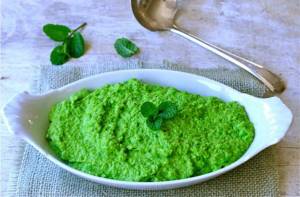
Is it possible to eat peas while losing weight?
The main parameters that determine a ban on a specific product during a diet, or permission to consume it, are calorie content, dietary fat and glycemic index. Everything here is ambiguous, primarily in the matter of calorie content:
- dry peas – 298 kcal;
- fresh/frozen – 72 kcal.
At the same time, the glycemic index also fluctuates as the condition of the product changes:
- for fresh peas the GI is 50 units;
- for dried – 25 units.
These 2 nuances create contradictions in the reviews of nutritionists, so they advise consuming peas for weight loss with less activity than other vegetables. BZHU plays in defense of this representative of legumes - there is a lot of protein here (5.4 g), which can partially compensate for the deficiency of this element when giving up meat and fish, and fats are almost completely absent. Carbohydrates are 14.5 g. Additionally, it should be clarified that this is a nutritious product that can quickly fill you up, and the body will not experience a lack of strength during physical activity if weight loss is carried out with peas.
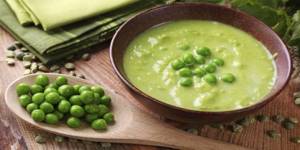
Is it possible to eat canned peas on a diet?
The chemical composition of products that have undergone special processing for long-term storage differs greatly from fresh ones, especially if the process was factory-made. From this position, the degree of their benefit decreases. Canned peas are no exception, which receive a large dose of salt, which is known to retain liquid and slow down the rate of weight loss. However, when losing weight, canned peas are not completely prohibited - they are only limited, because minus the salt, they remain the same (if there are no “chemicals” in the composition). The calorie content of canned peas is 55 kcal.

- Penalty for expired passport for late replacement
- Steamed fish in a slow cooker
- Osteopath - who is it and what does it do? Reviews about treatment by an osteopath
Pea diet
Despite the fact that the calorie content of peas can hardly be called low, its beneficial and dietary properties are so great that a pea diet was developed on its basis.
Nutritionists promise that with this diet you will lose 2-5 kg per week. The pea diet is simple, affordable and well tolerated.
The downside is that weight loss occurs not only due to fat burning, but also due to muscle tissue atrophy. To avoid this, you must exercise while dieting.
The diet menu is simple: every day at lunch you must eat a dish made from peas - soup, puree, porridge, etc. Breakfast is made up of cereals and fermented milk products; for dinner it is suggested to eat fresh or boiled (stewed) vegetables. You can eat berries and fruits as snacks. During the diet, meat dishes are not consumed - the body gets all its protein from peas.
The high calorie content of peas provides the human body with energy
, and the absence of animal fats in the diet has a positive effect on your figure.
This diet improves digestion, speeds up metabolism and promotes fat burning, while your mood improves, the condition of your hair, nails and skin improves, and your performance increases. If you liked this article, please vote for it:
(4 Votes) The review will introduce you to the applications and chemical composition of pea porridge. Find out whether pea porridge is healthy and why, how to choose and store it correctly, and much more. Pea porridge without high-calorie additives is a high-quality dietary dish.
It has been known since the time of Hippocrates
, popular in the East and the Mediterranean, especially loved in Russia.
The benefits of pea porridge
A small pea has everything you need
for human health. Plant proteins, natural carbohydrates and sugars, vitamins and amino acids, minerals and antioxidants.
Pea porridge is very nutritious and healthy for a hard-working and physically active person.
She will regain strength after extreme stress
, will increase muscle mass. No wonder athletes love her so much.
Vegetable protein in peas – almost a third
.
It provides a conscientious supply of building materials to the body, for which it is especially respected by vegetarians. The energy value of the finished porridge is relatively low, 90 kilocalories
per
100 grams
. Read more about the calorie content of peas of different types and cooking methods in a separate issue.
With the help of pea porridge you can significantly improve your health.
Eat it with vegetables and herbs: you will have an appetite, digestion will gradually improve, blood will improve, and pressure drops will decrease.
Natural fiber
will help cleanse the body and satisfy hunger.
A small portion of pea porridge - and you will be full for a long time without harm to your figure and with minimal damage to your budget.
The body will be saturated with vital energy for productive work, the brain will work more actively, the reaction will improve, and overall adaptation to stressful situations will improve.
Useful elements
The beneficial properties of pea porridge are directly related to the elements present in its structure. It is rich in vitamins and dietary fiber
.
It has an exceptionally balanced amino acid composition, which helps the body work harmoniously. An essential amino acid such as lysine, for example, relieves chronic fatigue and improves mood
.
Vitamin A
, which affects the health of skin, hair and nails, as well as vision, is found in large quantities in pea porridge.
Vitamin E
, a youth vitamin, helps prevent the appearance of wrinkles.
B vitamins
increase immunity. They are necessary for the health of the central nervous system, as well as for hematopoiesis.
Ascorbic acid ( vitamin C
) also helps strengthen the immune system and protects against colds.
Pea porridge is not the only source of valuable vitamins, micro- and macroelements. Other porridges also have their own individual vitamin composition and beneficial properties, so it makes sense to compare the qualities of pea porridge with some others, for example, pearl barley or barley.
It is worth periodically including pea porridge in your diet in order to saturate the body with macroelements (magnesium, phosphorus, sulfur, chlorine and sodium), as well as microelements (iron, calcium, iodine, manganese, selenium, fluorine, vanadium, boron, zirconium, tin , titanium, silicon).
Pea porridge for weight loss
How to cook porridge
Contraindications for use
Selection and storage
High-quality peas for pea porridge, uniform yellow color
, its grains are the same, large enough and not spoiled by pests.
Split peas
cook faster.
whole unshelled peas
have the highest content of nutrients .
black-eyed peas are especially effective for weight loss.
, known in African countries as "meat for the poor."
It has the maximum protein content. Peas are modest and unpretentious. He waits in the wings for a long time next to other cereals. But it is not recommended to store pea cereal for too long. The maximum period is one and a half years
.
Keep it away from spices and strong smelling substances. Keep the peas in a metal or glass jar in your cereal cabinet. There is no need to cover it with a lid; it is better to put natural breathable fabric
.
Pea porridge is certainly beneficial for a healthy person with good digestion.
If you are determined to become one, add porridge to your diet little by little, not forgetting to combine it with herbs and fresh vegetables.
For rich pea porridge, the principle “It is better to undereat than to overeat” is especially important.
Remember that the composition of pea porridge is unique, and it is practically irreplaceable in our diet.
How to burn calories from 100 g of boiled peas
For example, to burn all the calories from 100 grams of peas boiled in water, you will need 9 minutes of running or 1 hour 52 minutes of sleep.
>’> >’> >’> >’> >’> >’> >’> >’> >’> >’> >’> >’> >’> >’> >’>
| Activity | Calorie content per day per 100 g | |
| Dream | 1 hour 52 minutes | 8% |
| Meditation | 1 hour 41 minutes | 7% |
| Rest | 1 hour 32 minutes | 6% |
| Reading books, Internet | 1 hour 18 minutes | 5% |
| Sex | 0 h 48 min | 3% |
| Yoga, Pilates | 0h 32 min | 2% |
| Dancing | 0 h 30 min | 2% |
| Walking | 0h 26 min | 2% |
| Football | 0h 16 min | 1% |
| Swimming | 0 h 15 min | 1% |
| Abs workout | 0 h 14 min | 1% |
| Power training | 0 h 14 min | 1% |
| A ride on the bicycle | 0 h 13 min | 1% |
| Jumping rope | 0 h 10 min | 1% |
| Run | 0h 09 min | 1% |
What is beneficial for the body in peas?
The biological value of peas lies in the high percentage of various micro and macroelements. In addition, pea seeds are enriched with various types of organic acids and vitamins, the largest part of which are B vitamins.
Due to its high chemical value, peas have the following therapeutic effects on the body:
- Reduces cholesterol levels.
- Controls the amount of sugar in the blood.
- Promotes the breakdown and synthesis of aminocarboxylic acids.
- Prevents the formation of cancer formations.
- Stimulates the functionality of the digestive and cardiovascular organs.
- Reduces increased swelling.
- It is a potent anthelmintic.
- Helps reduce acidity in the stomach.
- Stimulates growth in adolescents, maintains proper muscle tone.
- Has a beneficial effect on mental abilities.
- Blocks aging processes.
- Normalizes stool.
Culinary secrets
The taste of a vegetable dish is affected by the following conditions:
- quality of raw vegetables;
- undercooked consistency;
- insufficient salting;
- poor grinding.
Each variety has its own characteristics: sweet carrots will make a sweet dish without added sugar; made from starchy potatoes - a lush side dish. Such nuances must be taken into account when choosing vegetables.
Half-raw root vegetables are poorly crushed, and the structure of the puree in water will be heterogeneous. The lack of salt makes vegetables tasteless with any amount of butter, milk and other ingredients. Salt is added immediately, otherwise it will not be absorbed into the structure of the root vegetable, which contains a lot of fiber.
Basic conditions for preparing a delicious side dish:
- the ratio of liquid and cooked root vegetables is 1:8;
- grinding to a creamy state;
- fats to taste, without exceeding the prescription norm.
Compliance with simple requirements will give a good result: a useful and high-quality product.
Vegetable purees in water retain all the beneficial properties of raw vegetables. The main thing when preparing them is the right amount of salt and a uniform structure.
Peas are a plant of the legume family; their fruits are eaten both fresh or frozen, and dried and cooked. This is a universal product from which you can prepare both the first and second course, and salad. The composition of peas is unique - it has a very high content of vitamins and minerals, and in terms of protein content, peas are close to meat - they contain more than 20%. Moreover, these proteins contain almost all the amino acids necessary for humans, including essential ones, and they are absorbed much better than proteins of animal origin.
Almost half the mass of peas (dried) is made up of carbohydrates - these are slow carbohydrates, thanks to which peas saturate and energize for a long time. Carbohydrates are the main source of calories in peas.
This product also contains a lot of fiber - more than 11% of the mass. Thanks to its presence, peas have a cleansing effect on the body and remove not only waste and toxins, but also excess cholesterol, and also stimulate intestinal motility and fight constipation. The high content of B vitamins makes peas a natural antidepressant; these vitamins stimulate brain activity, improve the functioning of the nervous system, reduce fatigue and normalize sleep, as well as increase stress resistance and improve mood. Peas also contain:
- vitamin PP, useful for blood vessels and blood;
- beta-carotene;
- vitamin A, necessary for skin and good vision;
- vitamin E, which has antioxidant properties;
- biotin, which improves the condition of skin, hair and nails and increases endurance during physical activity;
- choline, necessary for all synthesis processes in the body.
Peas are rich in calcium, which is essential for bone tissue. It also contains magnesium, which is involved in all processes occurring in the body, sulfur, chlorine, sodium, zinc, copper, manganese, iron, iodine, phosphorus, fluorine and other micro- and macroelements that are extremely important and beneficial for the body. Selenium helps prolong youth and blocks the entry of toxic substances from the outside into the body; Thanks to other elements, peas have a beneficial effect on bones, blood vessels, the condition of teeth, nails, skin, hair, improves energy metabolism, and enhances regeneration processes in the body.
The potassium contained in large quantities in peas deserves special attention - it not only removes excess salt from the body, preventing the occurrence of edema, but also strengthens muscles and improves their function, including the work of the heart muscle.
The calorie content of dry peas is 298 kcal per 100 g
. When cooked, it increases several times, saturated with water, so the calorie content of cooked peas is much lower. Boil peas in water for at least 40 minutes, during which time they increase in volume by 3-5 times (the calorie content of peas per 100 g decreases by the same amount). The volume of peas will increase even more if you fill them with water for several hours (or overnight).
The calorie content of fresh green peas is 55 kcal per 100 g. When frozen, pea grains lose moisture, and the dry mass per unit volume increases accordingly, so the calorie content of frozen green peas is higher and is 75 kcal per 100 g.
You should not overuse fresh or thawed green peas - they are a fairly rough food containing a lot of fiber, so they can injure the mucous membrane of the stomach or intestines, and can also cause increased gas formation.
Peas contain citric acid, which helps break down fats; it has a mild diuretic, choleretic and laxative effect, it also has anti-carcinogenic properties and helps dissolve kidney stones.
Is it possible to eat pea soup while losing weight?
A very healthy dish for anyone who is afraid of gaining weight is a simple (!) soup based on fresh or split peas, which is cooked with the addition of carrots and onions, but without the potatoes that most people are used to. Leave recipes with smoked meats and other meat additions for the “after weight loss” period, since they have an incredible calorie content. You can even spend a fasting day on the dietary version of soup, but it’s better to just introduce it into your diet as a lunch option.
Pea soup for weight loss will work for the benefit of your figure if you master the correct preparation:
- It is advisable to avoid frying (carrots and onions as standard), but if absolutely necessary, it should be cooked with olive oil.
- If you want to thicken the soup, but not interfere with weight loss, use... pea flour. You can buy ready-made or grind dry peas with a coffee grinder.
- Isn't life good for you without animal protein? You can use broth instead of water, but when losing weight, it is cooked on a piece of chicken/turkey fillet.
- To make the pea soup more filling, you can add a tablespoon of brown rice.
- Try to chop the vegetables that complement the pea soup very finely.
